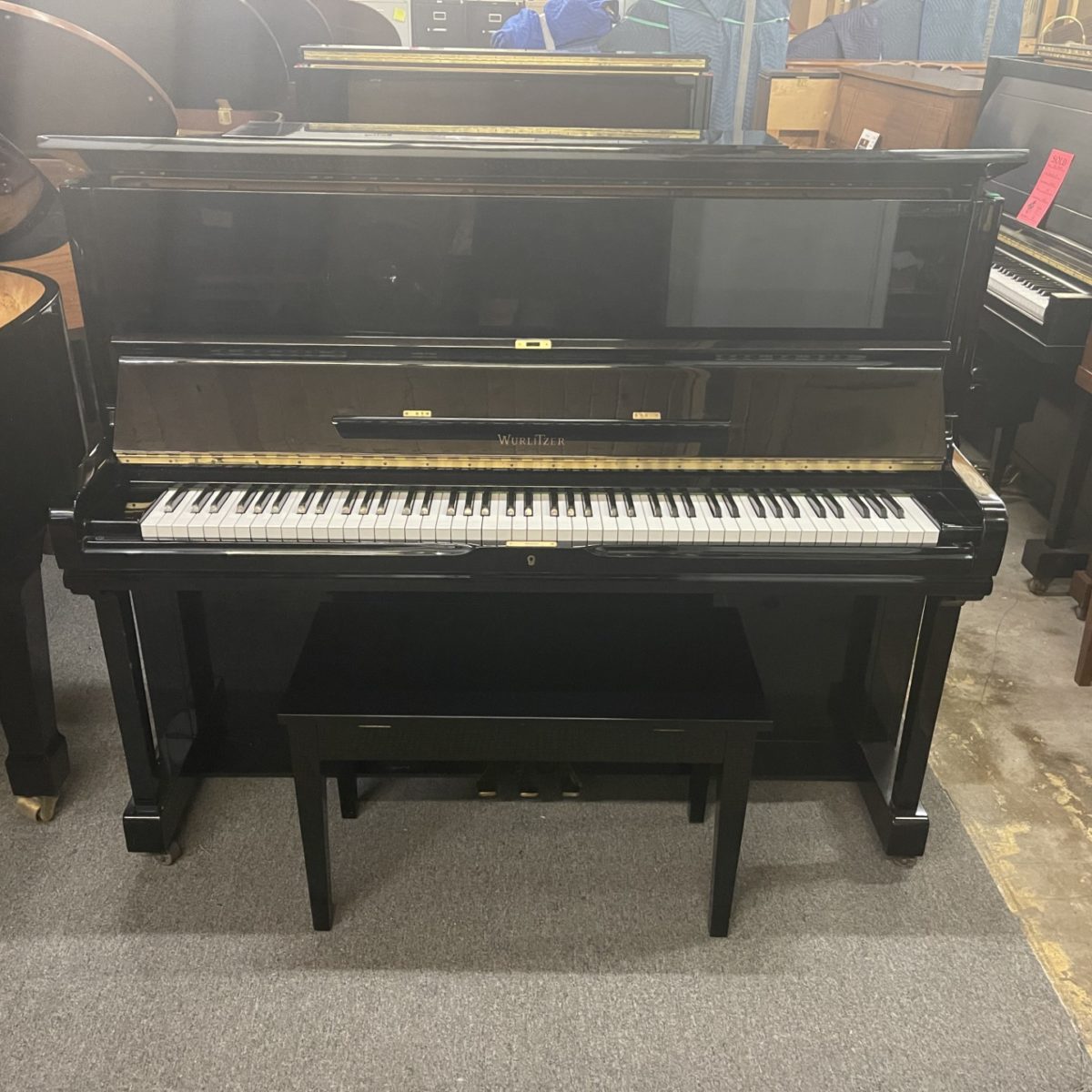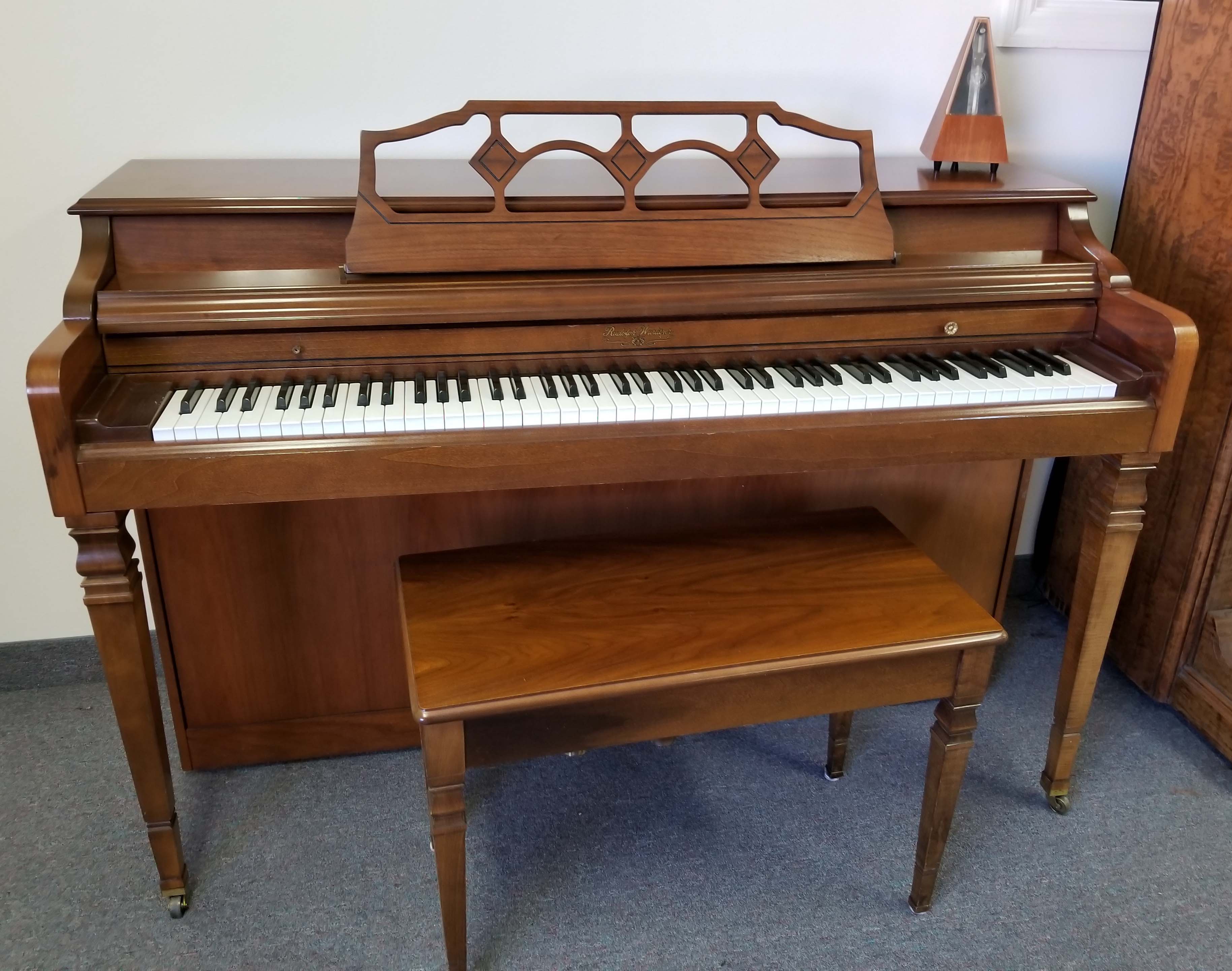

The stickers were sufficiently long that the hammer heads (the highest part of the action) ended up at roughly the same vertical level as the keyboard. In this device, the keys did not engage the action directly rather they pulled upward on rods called "stickers," which in turn pulled upward on levers located below the level of the keyboard, which in turn engaged the action. The defining characteristic of the spinet was its drop action (sometimes called indirect blow action). Many spinet pianos still exist today, left over from their period of manufacture. It served the purpose of making pianos available for a low price, for owners who had little space for a piano. The spinet piano, manufactured from the 1930s until recent times, was the culmination of a trend among manufacturers to make pianos smaller and cheaper. The drop action, lying below the level of the keyboard, can be seen, as well as the extreme angling of the strings needed to provide sufficient length of strings within the limited case height. Other uses of "spinet" for harpsichords ĭetail of the interior structure of the Gulbransen spinet shown above. Spinets are occasionally made today, sometimes from kits, and serve the same purpose they always have, of saving money and space. The spinettone was a local success among the musicians of the Medici court, and Cristofori eventually built a total of four of them. The spinettone incorporated multiple choirs of strings, with a disposition of 1 × 8′, 1 × 4′, and used the same ingenious mechanism for changing stops that Cristofori had earlier used for his oval spinet. The spinet was later developed into the spinettone ("big spinet") by Bartolomeo Cristofori (1655–1731), the inventor of the piano. In England, builders included John Player, Thomas Barton, Charles Haward, Stephen Keene, Cawton Aston, and Thomas Hitchcock. It is quite possible that Zentis was the inventor of the type so widely copied in other countries." He further notes that the spinet in France was sometimes called the épinette à l'italienne, supporting an Italian origin. Harpsichord historian Frank Hubbard wrote in 1967, "the earliest spinet known to me was made by Hieronymus de Zentis in 1631. Girl at a Spinet, 1871 painting by Gabriel von Max The fact that half of the gaps are four millimetres instead of ten makes it possible to crowd more strings together into a smaller case. They face in opposite directions, plucking the adjacent string on either side of the wider gap. The jacks (which pluck the strings) are arranged in pairs as well, placed in the wider gap.

The gap between the two strings of a pair is about four millimetres, and the wider gap between pairs is about ten. The other major aspect of spinet design is that the strings are arranged in pairs. Typically, there are very short sides at the right rear and on the left, connecting the bentside to the long side and the long side to the front. The front side of the spinet contains the keyboard. The longest side is adjacent to and parallel with the bass strings, going from the right rear corner to a location on the player's left. The side on the right is usually bent concavely (hence the name of the instrument), curving away from the player toward the right rear corner. The case of a bentside spinet is approximately triangular. What primarily distinguishes the spinet is the angle of its strings: whereas in a full-size harpsichord, the strings are at a 90-degree angle to the keyboard (that is, they are parallel to the player's gaze) and in virginals they are parallel to the keyboard, in a spinet the strings are at an angle of about 30 degrees to the keyboard, going toward the right. The bentside spinet shares most of its characteristics with the full-size instrument, including action, soundboard, and case construction.


When the term spinet is used to designate a harpsichord, typically what is meant is the bentside spinet, described in this section. Problems playing this file? See media help.


 0 kommentar(er)
0 kommentar(er)
